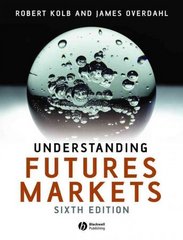Question
1. Which of the following statements is incorrect? a. All the answers are correct except one. b. In secondary markets, brokers are market specialists who
1. Which of the following statements is incorrect?
a. All the answers are correct except one.
b. In secondary markets, brokers are market specialists who bring buyers and sellers together when a sale takes place, and they execute the transaction for their client and are compensated for their services with a commission fee.
c. The FED regulates public securities markets in the United States.
d. The primary markets are not well known to the general public because they are wholesale markets and the sales take place outside of the public view.
e. With passage of the Financial Services Modernization Act (1999), the large investment and commercial banks are now quite similar.
2. Which of the following statements is incorrect?
a. Earnings per share (EPS), where EPS equals net income divided by the number of common shares outstanding.
b. An increase in common and preferred stock is a source of cash.
c, Earnings before taxes (EBT) shows what is earned purely from operations and reflects how efficiently the firm can manufacture and sell its products with taking into account the cost of the productive asset base (plant and equipment and intangible assets).
d. All the answers are correct except one.
e. Total assets = Total liabilities + Total stockholder's equity.
3. Which of the following statements is incorrect?
a. Subtracting depreciation and amortization from EBITDA yields the earnings before interest and taxes (EBIT).
b. The depreciation method directly affects the cost of the asset.
c. CFOA = EBIT Current taxes + Noncash expenses.
d. All the answers are correct except one.
e. An increase in common and preferred stock is a source of cash.
4. Which of the following statements is incorrect?
a. If the discount rate increases, then the present value of a potential investment would fall.
b. Total compound interest = Total simple interest - Total interest on interest.
c. The time value of money implies that a dollar received today is worth more than a dollar received tomorrow.
d. Simple interest is the interest paid on the original investment and the amount of simple interest remains constant from period to period.
e. All the answers are correct except one.
Step by Step Solution
There are 3 Steps involved in it
Step: 1

Get Instant Access to Expert-Tailored Solutions
See step-by-step solutions with expert insights and AI powered tools for academic success
Step: 2

Step: 3

Ace Your Homework with AI
Get the answers you need in no time with our AI-driven, step-by-step assistance
Get Started


